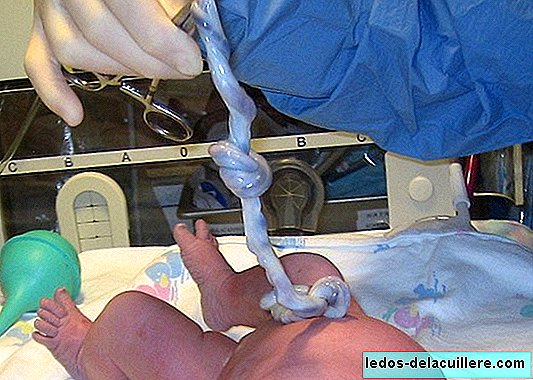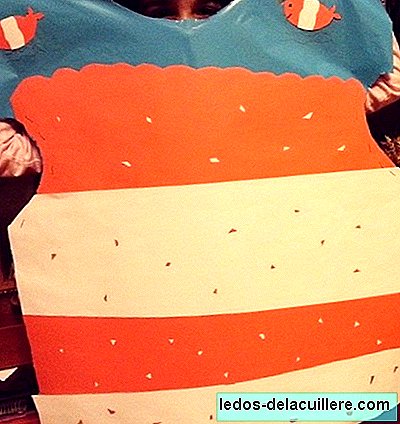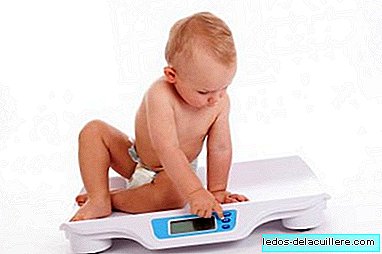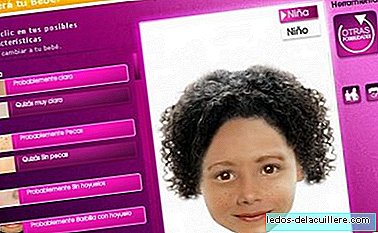A few days ago a story appeared saying that a four-year-old girl is recovering favorably from brain cancer thanks to the stem cells of her umbilical cord. This news has made many future mothers and fathers begin to doubt what to do at the time of delivery and that many current mothers and fathers have regrets for not having preserved the blood of their children's cord.
Some experts have wanted to put some peace on the matter and have stated that neither the girl has been cured, nor was it thanks to the treatment of own cells exclusively, since in addition to these cells the usual treatment was used in diseases such as that of this girl, with which the same result appears to be obtained.
The parents resolved the question about what to do with the cord blood of their daughter Alba by keeping it in a private cord bank. I say solving the doubt because freezing stem cells of the umbilical cord is only one of the four possibilities to consider when deciding the fate of cord blood, since it can also be donated to a public bank (for public use, both for research and to be used as a treatment for people who need it), it can end up being discarded (if a more or less premature cord cut is made and donation has not been decided) and it can end up in the baby (if it is not clamped the cord and let it beat so that the blood reaches its original receptor).
Given all these possibilities, and after learning about Alba's case, we ask ourselves: Is it worth freezing stem cells from the umbilical cord?
AdvertisingAlba's case
The case of Alba, commented a few days ago in Babies and more, the debate has originated, since many media have published the message that the girl improves her brain cancer thanks to the stem cells of her umbilical cord.
Let's say it's not true, but it's half true. Being the girl treated at the Niño Jesús Hospital in Madrid and needing stem cells to rebuild her blood system, the parents told the professionals that they had stored the blood of Alba's umbilical cord in a private bank. The doctors used those cells because, of course, they can be a good resource for such cases, but they also had to resort to peripheral blood cells.
Rafael Matesanz, director of the National Transplant Organization (ONT) explains the following:
It is very dangerous for people to think that without the cord transplant they would not have been saved, because it is not true. The standard procedure is to use peripheral blood cells and, as has been seen other times, the same result is obtained. It is important for families to know that if their child suffers the same disease that Alba can be treated, even if they have not stored cord samples.
Enric Carreras, president of the Josep Carreras Foundation, which includes the Bone Marrow Donor Registry, which coordinates with all public cordon banks in the world said:
An erroneous message is being launched. The girl is not yet cured and, in any case, the merit is not from the cord transplant. There were other options. I worry that false hopes are generated.
Donate it to a public bank or store it in a private bank?
Of the four options mentioned (and discarding that of discarding it, of which I think it is not necessary to speak), two of them involve extracting blood from the cord for possible therapeutic purposes, donation to a public bank and conservation in a private bank for use by the donor or their relatives.

To make this decision, several factors must be taken into account, which we will discuss below:
First, the applications of umbilical cord stem cells are varied, although they are used primarily to treat leukemias. Many cases of leukemia have a genetic component and in such cases the blood itself does not work. That is, if a child is detected with cancer and it is motivated by a genetic component, the stem cells of their own umbilical cord will not work, as they will have the same genetic code. In such cases, it is necessary to use samples from other donors.
Secondly, the majority of interventions performed come from samples obtained from outside strands, being very few those made with own cords (although it is also true that surely many more samples are kept in public banks than in private banks and that the donated ones can have multiple candidates, while the private ones only to the baby and their relatives).
According to Matesanz, the director of the ONT:
Those who opt for a private bank are in their right and it is a very respectable decision, but they should know that profitability is very low because the chances of them using it are very low.
From Crio-Cord, the company where Alba's parents kept the girl's cord has launched the following message:
Most of the transplants have been done with samples from public banks ... the only thing we offer is that we guarantee the family that, if they need it, they can have it.
It is estimated that the probability that a newborn or a relative needs a regenerative therapy with a high compatibility between a donor and its recipient at a given time is 1 case per 20,000 inhabitants (0.005%).
Third, a family that wants to freeze their baby's umbilical cord cells has to choose between a private center located in Spain or one located outside our borders. This choice is important because Spanish legislation is different from that of other countries and In our country, even if you decide to freeze your child's cord on your own and in a private center, the state can use it if it deems it convenient.
Fourth, donating the umbilical cord to a public bank is an altruistic and anonymous act. A donor, although he may need stem cells in the future, has no preference for being a donor, because, as we say, it is an anonymous act.
Fifth, you have to keep in mind that umbilical cord stem cells remain frozen for a certain time. With current technology it is estimated that the cells can be kept in optimal conditions for about 15 years (maybe more). However, the greater applicability of the stem cells in a subject occurs when it is adult or elderly, since in childhood there are usually few pathologies that require this type of cells (or they have a genetic component and cannot be used).
Sixthly, it is important to say that donating cord blood to public banks is a good for everyone, since it is an act that can cure diseases and save lives.
And lastly, it should be noted that not all donations end up succeeding. If a sample does not contain enough stem cells to be used later, the sample is discarded.
To be continue…
In an entry that we will publish within a few hours you can read the last option when deciding what to do with umbilical cord blood: I just got to the baby.
Photos | Salimfadhley, Drcornelius
In Babies and more | What you need to know before deciding to conserve cord stem cells, What you need to know before deciding to conserve cord stem cells (II), Preserve umbilical cord cells, snobbery or prevention?












